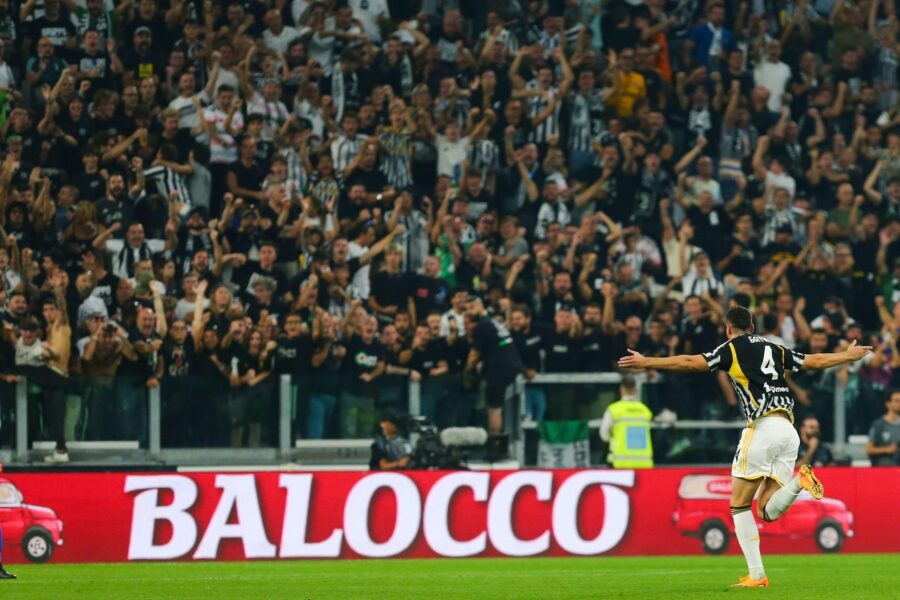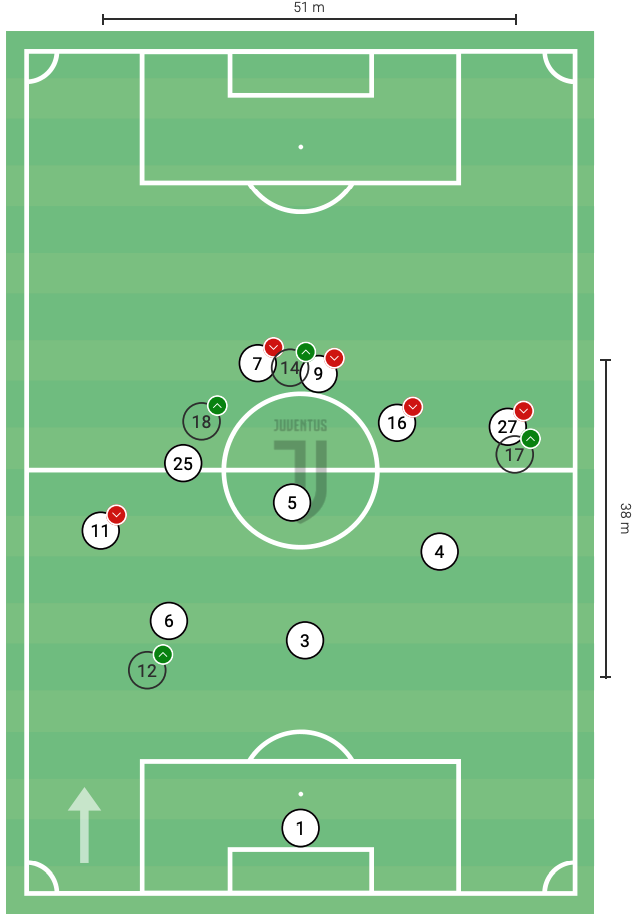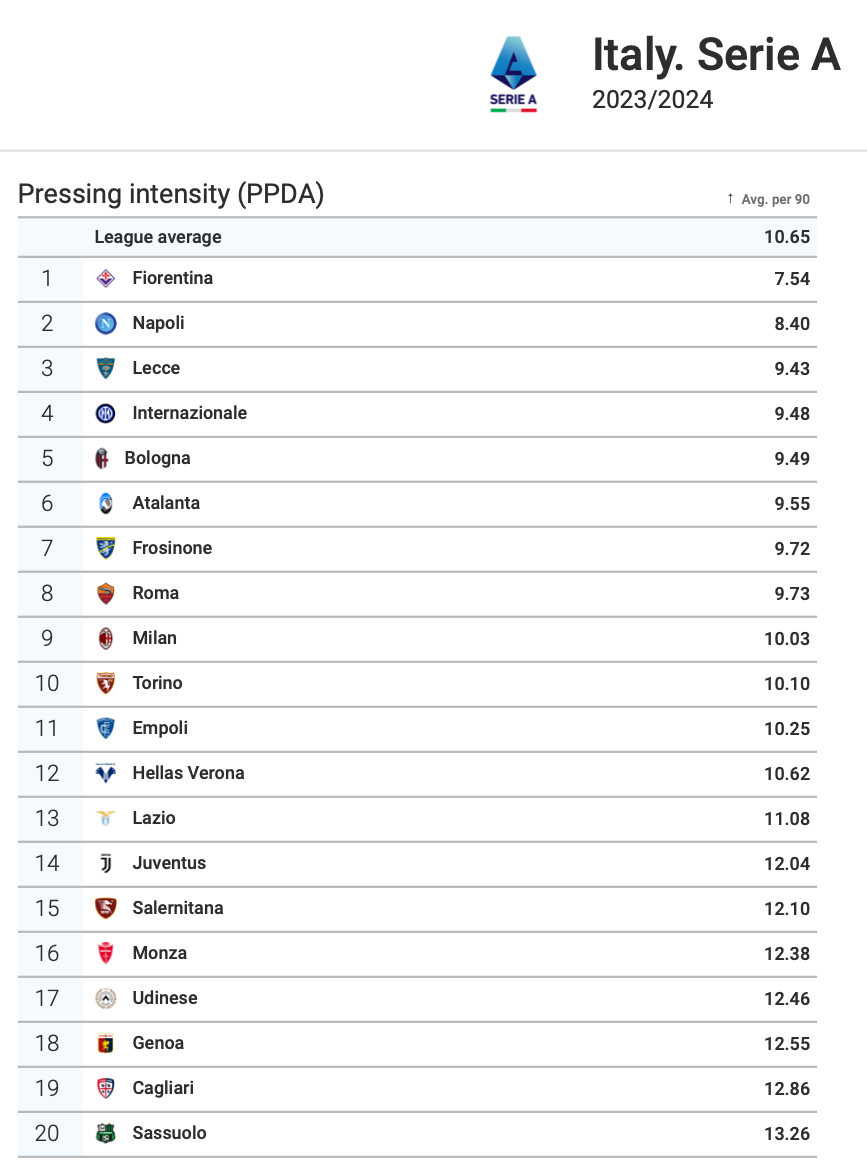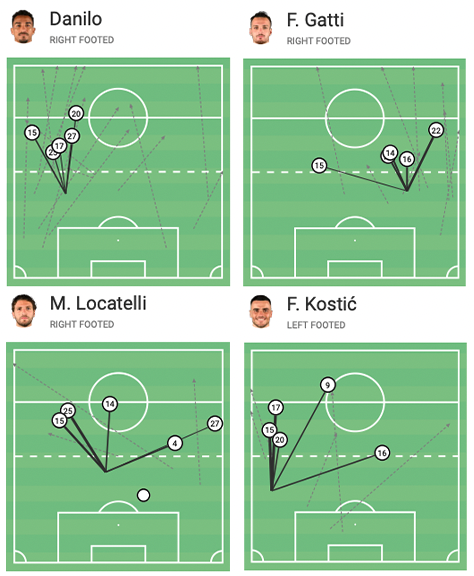How Defensive Effort Is Powering Juventus’ Challenge for the Serie A Title

Massimiliano Allegri’s Old Lady is building a great campaign based mainly on their defensive structure and strategy, making it hard for all opponents to find answers to beat them.
At the halfway point of the season, there’s an argument to say that Inter are the best team in Serie A. The Nerazzurri stand at the top of the league with 48 points, having played some brilliant and solid football so far. The main reason why Inzaghi’s side can’t be certain of having a dominating season is – quite unexpectedly – Juventus.
Before the season started, the Bianconeri weren’t considered as a contender for the Scudetto. The reigning champions, Napoli, still had great credit and AC Milan – given a brilliant transfer window in the summer - seemed a strong candidate for the title race. Juventus, though, have been the only team capable of having strong and consistent results behind Inter, so far at least. And if Allegri’s side manages to be so competitive, much of the credit goes to their defensive phase.
With 12 conceded goals, the Vecchia Signora have the second-best defense in the league. Advanced metrics confirm those numbers: at the time of writing, Juventus have conceded 17.2 xG, the second-best behind Inter’s 16 xG conceded. The two teams also have similar data in terms of xG and conceded goals differential: 5.2 more xG compared to conceded goals for Juve, and 7 for the Nerazzurri. Allegri has often been criticized for his conservative approach but, at the end of the day, nobody manages to play well against Juventus.
Except for the 4-2 loss against Sassuolo in the fifth game of the season – still Juventus’ only defeat this season – and the goalless draw in Bergamo against Atalanta, when Gasperini’s side managed to trouble Juve all game long, there haven’t been any matches in which the Bianconeri have been made to suffer by the opponents. In all games it was Juventus, through their attitude without the ball, to command the flow of the match, leaving the opponents with the only possibility to play according to Allegri side’s rules.
Eventually, the Tuscan manager got to build a team devoted to all of his dearest ideals. It can be debated whether Juve’s football is the best way to take advantage of their offensive talents given, for example, the sacrifices that strikers and Locatelli must endure, or the preference for physical inside forwards such as Rabiot and McKennie compared to more skilled ones like Miretti or Locatelli himself. What is not up for debate, though, is the players’ trust in their manager, as they all seem very much committed to following him in this extreme defensive attitude.
But how have Juventus become so solid?
Out-Of-Possession 5-3-2
Up to the beginning of this season, Allegri was often accused of giving too little certainties to his team. Specifically, other than the game style, people criticized the many changes in the lineup: in 112 games since his return to Turin, he had played 112 different starting XIs, up until the game against Sassuolo last September.
Today, Juventus seem to have quite a standard starting formation, in which those who are called to replace the starters can keep high performances that are mainly focused on the willingness to sacrifice without the ball. Allegri’s ideal 5-3-2 should be the one seen in the game against Napoli: in front of Szczęsny played the defensive trio made up of Gatti on the right, Bremer in the center and Danilo on the left. On the wings, Kostic to the left and Cambiaso to the right seem to be one step ahead in the hierarchies than Weah and Iling Jr. Rabiot on the left and McKennie on the right are the two Mezzali that need to play around Locatelli, the playmaker. In front, Vlahovic and Chiesa are the designated strikers, even if in the last few games Yildiz’s explosion offered another potential starter to the team.

There are matches in which Juventus adopted a more aggressive attitude. In particular, their pressure worked against a team that plays well from the back such as Inter, even if the Nerazzurri scored the only time Juventus’ players got the timing wrong with the pressure. Juve also had a similar attitude against Napoli, but Mazzarri’s team used long passes rather than building up from the back.
Of course, high pressure is not constant but rather used in particular situations: goal kicks from the goalkeeper and backside passes towards the defense. Juventus use the ball as the first reference, to then mark all opponents around it. The pressing style changes according to the opponent’s position.
Against a three-man defense like Inter’s, one of the inside forwards joins the two strikers to pressure the center-backs, making sure there’s a 3v3 situation when the opponents build up from the back. When this happens, Juve’s center-back on that side moves forward to mark the man who is left free by the Mezzala’s movement: against Inter, for example, McKennie advanced on Bastoni, leaving Mkhitaryan free behind him; at that point, Gatti moved forward to mark him. Against a four-men defense like Napoli’s, on the other hand, winger Cambiaso moved forward towards Napoli’s full-back Natan during goal kicks, while on the other flank, it was inside forward Rabiot that marked Napoli’s full-back, leaving McKennie and Locatelli in the center of the pitch.
When in possession, Juve unite in a medium-low block and, as said, only trigger the pressure when a backward pass to the opposing defense happens.
If high pressure can be useful in certain situations, the best move of Allegri’s football remains the positional defense in their own half. Juve compacts vertically in their 5-3-2 that wants to close off the center of the pitch for the opponents, forcing them towards the wings. There, with the help of the sideline, the inside forward and winger pressure more aggressively on the opponents. Juventus’ PPDA data – 12.04, the seventh-highest in the league, proves how they prefer to lower their barycenter.

Facilitating the Bianconeri with this strategy is the physical prowess of their players in the center of the pitch. The three starting midfielders – Rabiot, Locatelli and McKennie – all stand above 1.85m, which helps them create density centrally. The two Mezzali, Rabiot and McKennie, then have great pace and stride, which makes them perfect to run toward the flanks that are required by Allegri’s 5-3-2.
If the opponents can ‘conquer’ the offensive third, while the winger and one inside forward shift towards the flank, Juve puts all the other four defenders plus Locatelli within the penalty box to block all crosses, a fundamental in which all the Bianconeri’s defenders – including substitutes – excel both for their focus and ability to direct their clearances, always directing the ball towards non-dangerous areas of the pitch. In the defense of the penalty box, Locatelli’s involvement is laudable, as he now acts as an additional defender: he already learned how to be a balancer in his own half at Sassuolo, but this part of his game has become even stronger at Juve.
The Influence of the Offensive Phase
In modern football, we know how the attitude during the offensive phase can influence defensive choices too: losing the ball while having an organized team means having a good negative transition.
In Allegri’s Juventus is the idea of remaining covered defensively that influences the offensive strategy. Positioning on the pitch and the build-up structure, then, depends on the willingness to avoid risks. Juventus don’t have a very elaborate first phase of possession to avoid losing dangerous balls to the opponents.
When advancing in the build-up, they prefer not to seek passes in central areas, which would make it easier for their opponents to win the ball back and counterattack quickly. This is why Allegri mostly asks his players to develop the buildup in wide areas, with lots of switch of plays: losing the ball on the wing is less dangerous than losing it on the center.

Player positioning is also influenced by the idea of avoiding risks in possession. While most teams tend to have a four-men line at the back that becomes three when building up, Juventus sometimes do the opposite: they defend with three center-backs but build up with a four-man defense, with Kostic lying deep as a left full-back and Gatti going wide as the right full-back. Building up with this structure allows them to have one more man at the back in case they lose possession.
Normally, with three-man defenses, it’s the wingers that create space wide when attacking. At Juventus, though, it often happens that McKennie runs wider on the right or Chiesa does the same on the left. By doing so, Rabiot and Kostic can lie deep on the left to absorb a potential defensive transition, while Cambiaso and Gatti do the same on the right. McKennie, by the way, is also very good at running back and, even when playing high and wide, can easily help them in transition.
So, the non-possession phase has once again become a strength for Juventus. But even though old sayings have defenses winning championships, the Old Lady must find goal-scoring and game-winning chances more consistently if they want to compete for the title.
Lately, Juve gave the impression of also benefitting from a psychological advantage: Allegri’s men never question their gameplan, as defensive as it can be. Opponents, big teams included, are often floored by this attitude and they struggle to find answers, even when they try to go out of their comfort zone.
Will this feeling of solidity be enough for Juventus to compete for the championship until the very end?
Start your 15-day Wyscout free trial now.
Visit L’Ultimo Uomo website.
